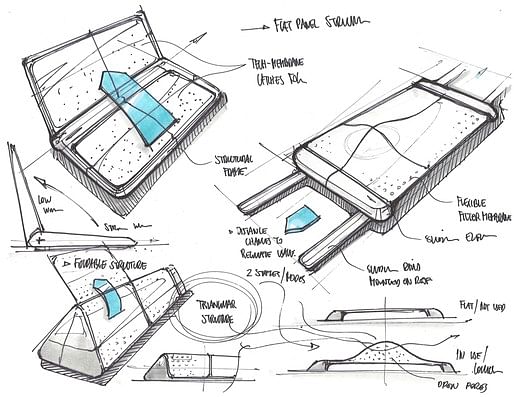
Simply look up into the sky at a single cloud, on average that white pouf holds 8 million gallons of water — enough to sustain 100,000 people for a day. Yet the water we harvest has become so scarce, its cost is greater than the devices invented to catch and deliver it. [...]
How might we imagine new ways to collect water? How do we get it off my socks and into my coffee cup?
Fog catchers – contraptions that gather the moisture in our atmosphere for drinking water – have been used by humans and animals alike to survive in some of the driest places on earth. In Chile's Atacama desert, fog catchers have been in use for over half a century, and even are used to gather water to brew local beer. The Namib beetle (named for its habitat in the South African desert) has a pattern of bumps on its back that funnel trapped moisture into its mouth. Now, these simple water-capturing techniques are being looked to as one of the many potential relief systems in the American southwest's historic drought.
In one of their simplest forms, fog catchers are essentially fine-meshed nets, erected on the landscape at an angle suited to the area's fog and winds. The basic form was made drastically more efficient by MIT and Chilean researchers relatively recently, however there's more room for innovation in both smaller and larger-scale applications. In perpetually foggy places, such as San Francisco, fog catchers could be deployed at both personal and public levels, as imagined by IDEO's "Tomorrow in Progress" series.
Check out some visuals from their idea below:



For more reading on adaptations (both pragmatic and speculative) to the drought:
Have an idea for how to address the drought with design? Submit your ideas to the Dry Futures competition!
2 Comments
dope.
On a related note Bracket [on farming] featured a project on fog harvesting by Rob and Stephen of mammoth.
Some early exploration/research for the project can also be found here...
Block this user
Are you sure you want to block this user and hide all related comments throughout the site?
Archinect
This is your first comment on Archinect. Your comment will be visible once approved.